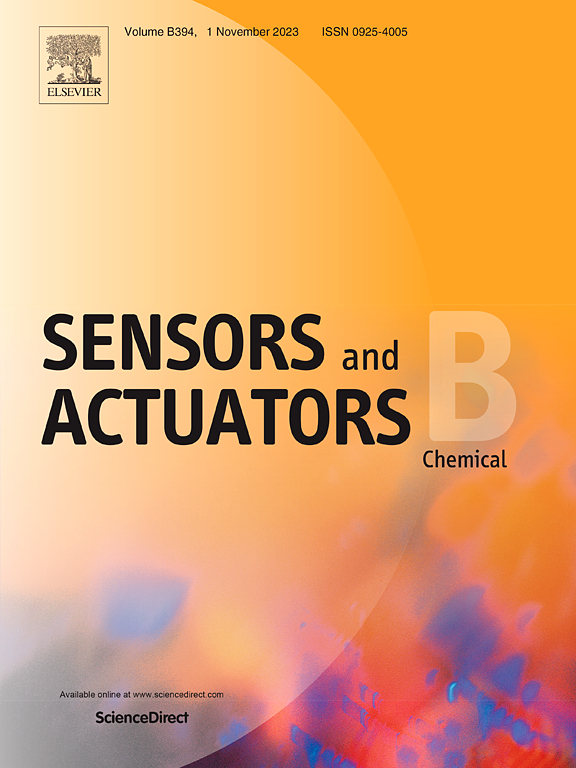Microstructure-controlled preparation of monodisperse In2O3 for excellent HCHO sensing with high selectivity, good anti-humidity and low detection limit
IF 8
1区 化学
Q1 CHEMISTRY, ANALYTICAL
引用次数: 0
Abstract
Morphology control significantly improves the microstructure, increases the number of defects, tailors porosity, and optimizes the band gap of gas-sensing materials, profoundly affecting the adsorption and desorption capabilities for gas molecules. Herein, we prepared In(OH)3 precursors via a hydrothermal method and rationally controlled the microstructure of In2O3 by varying annealing temperatures (400°C, 500°C, 600°C). Characterizations revealed that the porous cubic In2O3-500 (500°C) exhibited superior properties, including more balanced grain size and crystallinity, superior pore structure, more oxygen vacancies and adsorbed oxygen, and a narrower band gap compared to the surface-dense cubic In2O3-400 (400°C) and the porous spherical In2O3-600 (600°C). Gas-sensing tests demonstrated that three sensors displayed exceptional selectivity towards formaldehyde (HCHO), with rapid response times (1 s) to 100 ppm HCHO. Notably, In2O3-500, operating at a lower temperature (175°C), achieved the highest response (Ra/Rg = 200), good humidity resistance, and the lowest detection limit (30 ppb). The gas-sensing performance at 60 RH% showed that In2O3-500 still exhibited the highest response (161) to 100 ppm HCHO at 175℃, a decrease of less than 20 %. This study offers insights into the cost-effective and facile fabrication of high-performance HCHO gas sensors based on In2O3 materials.
微结构控制制备的单分散In2O3具有高选择性、良好的抗湿性和低检测限的HCHO传感性能
形貌控制显著改善了气敏材料的微观结构,增加了缺陷数量,定制了孔隙度,优化了带隙,深刻影响了气体分子的吸附和解吸能力。本文采用水热法制备了In(OH)3前驱体,并通过改变退火温度(400℃、500℃、600℃)合理控制了In2O3的微观结构。表征结果表明,与表面致密立方In2O3-400(400°C)和多孔球形In2O3-600(600°C)相比,多孔立方In2O3-500(500°C)的晶粒尺寸和结晶度更平衡,孔隙结构更优越,氧空位和吸附氧更多,带隙更窄。气敏测试表明,三种传感器对甲醛(HCHO)具有出色的选择性,对100 ppm的HCHO具有快速的响应时间(1 s)。值得注意的是,在较低温度(175°C)下工作的In2O3-500获得了最高的响应(Ra/Rg = 200),良好的耐湿性和最低的检测限(30 ppb)。在60 RH%条件下的气敏性能表明,175℃条件下,In2O3-500对100 ppm HCHO的响应仍最高(161),降幅小于20%。该研究为基于In2O3材料的高性能HCHO气体传感器的成本效益和易于制造提供了见解。
本文章由计算机程序翻译,如有差异,请以英文原文为准。
求助全文
约1分钟内获得全文
求助全文
来源期刊

Sensors and Actuators B: Chemical
工程技术-电化学
CiteScore
14.60
自引率
11.90%
发文量
1776
审稿时长
3.2 months
期刊介绍:
Sensors & Actuators, B: Chemical is an international journal focused on the research and development of chemical transducers. It covers chemical sensors and biosensors, chemical actuators, and analytical microsystems. The journal is interdisciplinary, aiming to publish original works showcasing substantial advancements beyond the current state of the art in these fields, with practical applicability to solving meaningful analytical problems. Review articles are accepted by invitation from an Editor of the journal.
 求助内容:
求助内容: 应助结果提醒方式:
应助结果提醒方式:


